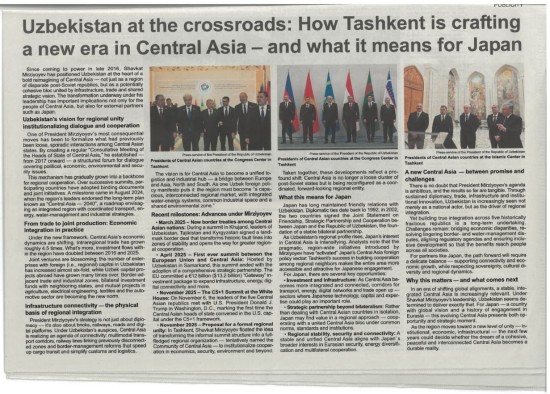Adopting artificial intelligence and other disruptive technologies could create more than 430,000 net new jobs in just two key industries in Uzbekistan by 2025, but only if the country puts in place favorable policies and invests in skills and training, according to a new Asian Development Bank (ADB) study.
Embracing these so-called Fourth Industrial Revolution (4IR) technologies would create 100,000 new jobs in the Central Asian nation’s textile and garment manufacturing industries— which have significant untapped growth potential, and 334,000 jobs in the construction industry— already among the largest employers in the country, by 2025.
The analysis emerges from a new ADB study, Harnessing the Fourth Industrial Revolution Through Skills Development in High-Growth Industries in Central and West Asia, which assesses the potential impact of jobs created and displaced by new technology in Azerbaijan, Pakistan, and Uzbekistan.
“While Uzbekistan has adopted many supportive policies to nudge its firms and workers toward a digital future, now is the time to develop a coherent, overall 4IR road map,” said ADB Director General for Central and West Asia Yevgeniy Zhukov. “Uzbekistan needs a clear action plan outlining how disruptive technologies can be adopted in each industry, stronger coordination among stakeholders, and long-term planning to build a 4IR-ready workforce that is able to support the industry’s transformation.”
The study is based on a survey of employers in the two industries in Uzbekistan—selected because they are crucial for growth, employment, and 4IR. The survey is complemented by analysis of online job portal data and a separate survey of training institutions to gauge their readiness for 4IR.
To calculate the net job creation figures, the study used a model to estimate the number of roles displaced by automation and new jobs created by income and productivity gains from the potential transition to using 4IR technologies. With appropriate policies and investments in skills, the number of new jobs created will outnumber jobs lost.
Most of the firms surveyed have shown interest in deploying 4IR technologies across a range of functions by 2025. Textile and garment manufacturing firms estimate that adopting 4IR technologies will increase labor productivity by 68% between 2020 and 2025, while construction firms estimate a 60% increase over the same period.
The report finds that small and medium sized businesses (SMEs) which employ about 80% of Uzbekistan’s workforce, could face more resource and manpower constraints in adopting 4IR technologies. It recommends free or subsidized 4IR-focused advisory programs for SMEs as well as on-the-job training for workers—both in-house and through external providers—which could also help address SMEs’ specific resource constraints.
According to the survey, 56% of training institutions in Uzbekistan use online self-learning modules to deliver training, while only a third use virtual reality or augmented reality.
“To improve workforce readiness for 4IR, it is important to deploy innovative technologies such as augmented and virtual reality which can train workers more effectively, and better prepare graduates for the workplace which is undergoing digital transformation,” said ADB Principal Education Specialist Shanti Jagannathan, who led the study.
To overcome sociocultural norms and ensure that female workers can benefit from higher-skilled, better-paying technical jobs created by 4IR in the long-term, the study recommends developing targeted programs for women.














